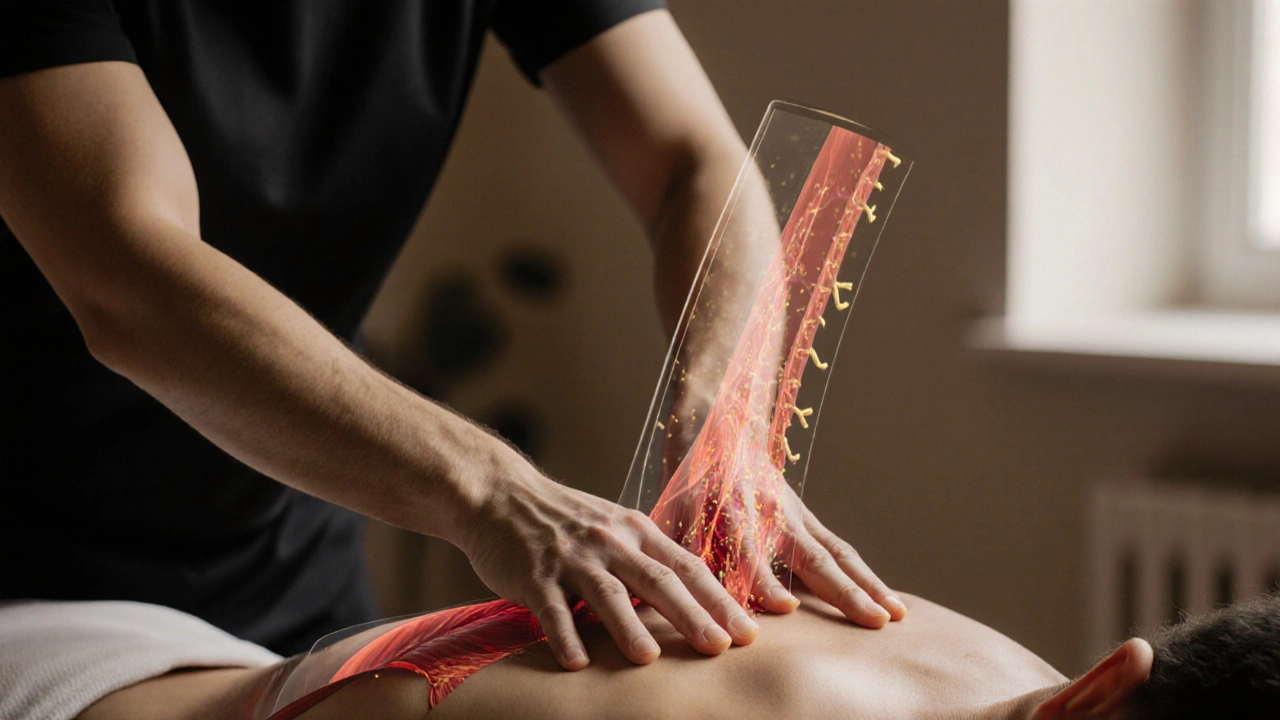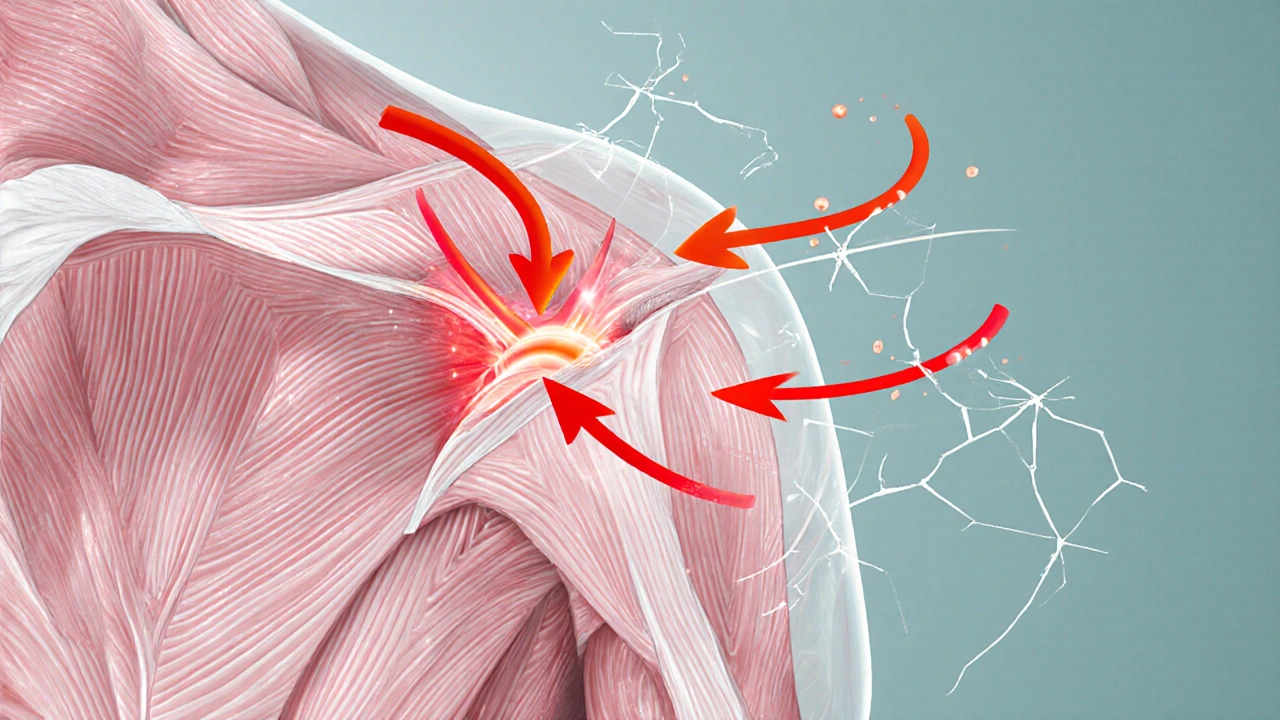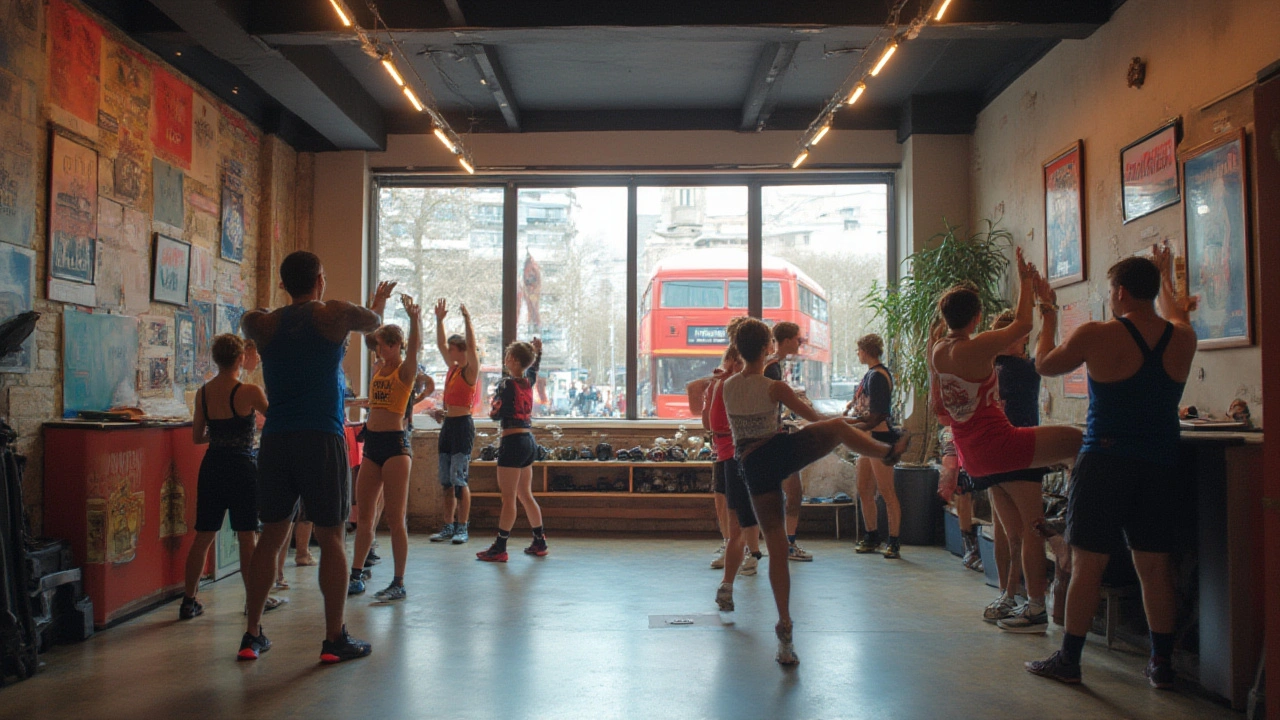Struggling with chronic pain can really drain your energy, but deep tissue massage offers real, hands-on relief without relying on medication. This article explains how deep tissue massage works, what makes it different, and why more people are turning to it for pain management. We’ll break down what happens during a session, what benefits you can expect, and key safety tips. Want to know if it’s right for you? Everything you need to make an informed choice is covered here.

- Created by: Archer Caldwell
- Completed on: 20 Oct 2025
- Categories: Deep Tissue Massage
Quick Takeaways
- Deep tissue massage targets deep tissue massage layers to release tension and improve circulation.
- It works by breaking down adhesions in muscle fibers and the connective tissue surrounding them.
- Benefits include faster muscle recovery, reduced pain, and lowered stress hormones.
- Typical sessions last 60‑90 minutes and cost £55‑£90 in London.
- Watch out for contraindications like recent injuries, fractures, or severe osteoporosis.
Direct Answer
Deep tissue massage is a therapeutic technique that applies firm pressure to the deeper layers of muscle and fascia, stimulating blood flow, releasing adhesions, and triggering the body’s natural pain‑relief chemicals.
Comprehensive Guide to Deep Tissue Massage
If you’ve ever wondered why a therapist’s firm strokes can melt away chronic neck pain, the answer lies in science. Below we break down what deep tissue massage actually does, why it matters, and how you can make the most of a session.
Definition and Context
Deep tissue massage is a massage technique that focuses on the deeper layers of muscle and connective tissue (fascia). It differs from lighter modalities by using slower, more deliberate strokes and higher pressure to reach the tissue beneath the skin’s surface.
The method emerged in the 1970s as a response to athletes’ needs for faster recovery, and it’s now common in wellness clinics, sports physiotherapy, and spa settings.
How It Works: The Science Behind the Pressure
When a therapist applies pressure, three main processes kick in:
- Mechanical disruption of adhesions. Over time, adhesions-tiny bands of scar‑like tissue-form between muscle fibers and their surrounding fascia. Pressure helps break these bonds, restoring normal sliding motion.
- Increased blood circulation. The compression and release pattern pushes blood into the targeted area, delivering oxygen and nutrients while flushing out metabolic waste such as lactic acid. This accelerates tissue repair.
- Neurochemical response. Deep pressure stimulates the nervous system to release endorphins and reduces cortisol levels, providing natural pain relief and a calming effect.
Research from the Journal of Bodywork and Movement Therapies (2023) showed a 30% reduction in perceived muscle soreness after a single 45‑minute deep tissue session, supporting these mechanisms.

Benefits of Deep Tissue Massage
Because it tackles the root of muscular tension, deep tissue massage offers several concrete advantages:
- Accelerated muscle recovery. Athletes report faster return to training thanks to improved oxygen delivery.
- Pain relief. Chronic back, neck, and shoulder pain often diminish after just a few sessions.
- Enhanced range of motion. Breaking down fascial restrictions can increase flexibility without stretching.
- Stress reduction. Lower cortisol and higher endorphins translate to a calmer mood.
- Improved posture. Rebalancing tight muscles helps align the skeletal structure.
Types and Variations Available in London
While the core technique remains the same, practitioners may combine deep tissue with related methods:
- Trigger point therapy. Focuses on tight knots that refer pain to other areas.
- Myofascial release. Uses sustained pressure to stretch the fascia itself.
- Sports‑specific deep tissue. Tailored to athletes’ injury patterns, often paired with stretching.
Choosing the right variation depends on your goals-pain relief, performance, or general wellness.
How to Find Qualified Deep Tissue Massage Services in London
Not every therapist is equipped to deliver true deep tissue work. Look for these credentials:
- Registered with the UK Register of Massage Therapists (UKRMT) or the Massage Training Institute (MTI).
- Additional certification in sports or deep tissue modalities.
- Positive client reviews mentioning “firm pressure,” “pain relief,” and “professional handling of trigger points.”
Use local directories, ask your physiotherapist for referrals, or search Google with “deep tissue massage London” and filter by rating and price.
What to Expect During a Session
A typical deep tissue appointment follows this flow:
- Consultation (5‑10 min). You discuss pain areas, medical history, and pressure tolerance.
- Warm‑up (5 min). Light strokes to increase blood flow.
- Core work (40‑60 min). Therapist applies steady pressure, often holding each spot for 8‑12 seconds before moving.
- Cool‑down (5‑10 min). Gentle movements to relax the muscles.
- After‑care advice. Stretching, hydration, and possibly a light heat pack.
Expect some discomfort-think of a good stretch-but never sharp pain. Communicate openly; good therapists adjust pressure on the fly.

Pricing and Booking
In London, prices vary by location and therapist expertise:
- Standard 60‑minute session: £55‑£70.
- Extended 90‑minute session: £80‑£95.
- Package deals (5 sessions): 10‑15% discount.
Most clinics accept online booking through their website or via phone. It’s wise to book at least a week ahead, especially for weekend slots.
Safety Tips
Deep tissue is powerful, so keep these precautions in mind:
- Avoid if you have recent fractures, severe osteoporosis, or open wounds.
- Inform the therapist of any blood‑thinning medication, heart conditions, or skin infections.
- Stay hydrated before and after to help flush out metabolic waste.
- After a session, take it easy for a few hours-no heavy lifting or intense cardio.
Comparison Table: Deep Tissue vs. Swedish Massage in London
| Aspect | Deep Tissue Massage | Swedish Massage |
|---|---|---|
| Pressure | Firm, slow strokes targeting deeper layers | Light to medium strokes, focus on surface muscles |
| Goal | Release adhesions, reduce chronic pain, improve recovery | Relaxation, circulation boost, stress relief |
| Typical Session Length | 60‑90 minutes | 45‑60 minutes |
| Average Cost (London) | £55‑£90 | £45‑£70 |
| Contraindications | Recent injuries, severe osteoporosis, acute inflammation | Fewer restrictions; generally safe for most people |
FAQ: Your Deep Tissue Massage Questions Answered
How often should I get a deep tissue massage?
For chronic pain, once a week or bi‑weekly works well. For maintenance, a monthly session usually suffices.
Is deep tissue massage painful?
You should feel a strong stretch or “good ache,” not sharp pain. Communicate any discomfort; the therapist can adjust pressure.
Can deep tissue massage help with sciatica?
Yes, targeting the piriformis and lower back can alleviate sciatic nerve irritation, but it should be combined with stretching and physician guidance.
What should I do after a session?
Drink water, avoid heavy exercise for a few hours, and apply a warm compress if muscles feel tight.
Is deep tissue massage covered by NHS or private insurance?
Generally not under NHS, but some private health plans reimburse it if prescribed by a doctor.
Ready to Experience the Benefits?
If you’re curious about how deep tissue massage can boost recovery and cut pain, start by searching for a certified therapist in your area. Book a trial session, tell the therapist your goals, and enjoy the science‑backed relief.
Explore the science of deep tissue massage, its benefits, how it works, pricing, safety tips, and FAQs to help you decide if it's right for you.
Discover London’s most effective sports massage techniques, how they help with injury recovery, and where to find the best therapists in the city.



Rosanne van der Greft
October 20, 2025 AT 16:20Wow, another post trying to sell you deep tissue as a miracle cure 😒. The science section is solid, but the marketing fluff inflates the price like it's a boutique spa experience. If you’re in London, expect to drop £70‑£90 just for a therapist who can actually apply the pressure without turning you into a pretzel. And the “no pain, only good ache” disclaimer? Classic bait‑and‑switch for newbies who think soreness equals success. Remember, more pressure isn’t always better-over‑doing it can actually worsen inflammation 😬. So, do your homework, check credentials, and don’t let the fancy jargon scare you into overspending.
Christopher Dan Rangaka
October 20, 2025 AT 17:20Oh sure, because we all have endless spare cash to splurge on a 90‑minute “muscle‑melt” session, right? 🙄 If you’re looking for recovery, just drink water and stretch – it works for most of us mortals. The article’s table is nice, but it forgets that a decent sports therapist can do the job for half the price. Also, “firm pressure” isn’t a badge of honor; it’s a red flag if the therapist doesn’t ask about your pain thresholds. So maybe skip the fancy hype and book a decent physiotherapy appointment instead.
Rayna Hawley
October 20, 2025 AT 18:20Indeed, as you have elucidated, the cost structure presented warrants a meticulous evaluation. One must ascertain whether the therapist possesses verifiable certifications, such as those conferred by UKRMT, prior to committing substantial financial resources. Moreover, it is imperative to consider alternative modalities, for example, myofascial release, which frequently yields comparable outcomes at reduced expense. The literature you referenced supports a 30% reduction in soreness, yet such statistics are frequently contingent upon controlled study conditions not always replicable in everyday practice. Consequently, a prospective client should inquire about the therapist’s experience with specific ailments, request a detailed treatment plan, and perhaps commence with a shorter initial session to evaluate tolerance. This prudent approach mitigates risk of inadvertent over‑exertion and financial overreach. Additionally, ensuring hydration pre‑ and post‑session is advisable, as it facilitates metabolic waste clearance. In summary, thorough due diligence coupled with measured expectations optimizes therapeutic benefit while safeguarding both health and wallet.
Rajesh Kumar bisai
October 20, 2025 AT 19:20Great rundown! I’ve tried deep tissue a few times and noticed a real boost in my range of motion after just one session. The key is to communicate any discomfort early so the therapist can adjust pressure. Hydrating afterward and doing light stretching really seals the benefits. Plus, the stress‑reduction vibe is a nice bonus after a hectic workweek. Definitely worth giving a try if you’ve got muscle tightness.
Ariel Lauren
October 20, 2025 AT 20:20While your enthusiasm is noted, professional supervision remains essential.
Vishal saini
October 20, 2025 AT 21:20Deep tissue massage, when applied correctly, leverages biomechanical principles to enhance tissue remodeling. The sustained pressure creates micro‑trauma that initiates the inflammatory cascade, prompting fibroblast activation and collagen synthesis. Concurrently, the mechanical deformation of fascial layers improves viscoelastic properties, allowing greater extensibility. Increased intramuscular blood flow delivers oxygen and nutrients while expediting the removal of metabolic by‑products such as lactate. Neurophysiologically, the stimulation of type II afferent fibers modulates the descending pain inhibitory pathways, resulting in endogenous opioid release. Empirical studies, including the 2023 Journal of Bodywork and Movement Therapies trial, documented a statistically significant decrease in perceived muscle soreness post‑session. However, dosage matters: beyond 60 minutes, the risk of paradoxical inflammation rises, particularly in individuals with compromised healing capacity. Patient selection is paramount; contraindications such as osteoporosis, recent fractures, or active infection contraindicate high‑intensity protocols. Prior to treatment, a comprehensive intake should assess medication use, especially anticoagulants, to mitigate hemorrhagic risk. Post‑session protocols, such as encouraging 500 ml of water intake and a 15‑minute light activity period, enhance lymphatic drainage. Practitioners should also integrate active release techniques to address specific trigger points, thereby augmenting therapeutic outcomes. For athletes, scheduling sessions 48‑72 hours after intense training aligns with the natural tissue repair timeline, optimizing adaptation. In clinical settings, combining deep tissue with graded exercise programs has shown additive effects on functional recovery. Lastly, documentation of pressure levels via patient‑reported visual analog scales facilitates longitudinal monitoring and outcome assessment. When these evidence‑based practices are adhered to, deep tissue massage serves as a valuable adjunct within multimodal rehabilitation strategies.